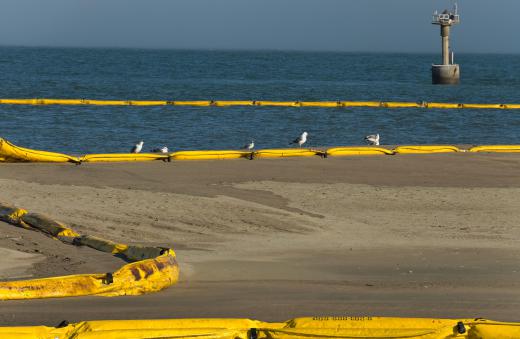A silt trap is a designated area where water that is contaminated with suspended sediment as a result of construction activity or water runoff is contained. While the water is in the trap, the sediment can settle to the bottom of the trap until it can be removed. These devices can be made using silt curtains, silt fences or a series of shallow ponds to naturally filter the sediment from the water before it reaches a stream or clean body of water.
Environmental protection efforts, such as the silt trap, are often seen in conjunction with mining or construction. Activity from these industries can result in the production of grain-size particles, stone dust and other components that create suspended sediment when caught up in water runoff during rainfall. As the rainwater carries these particles and other pollutants to streams, rivers and lakes, the suspended sediment can cause a serious issue for the fish and other wildlife that inhabit these waters.

The silt trap is designed to prevent the ecological disaster that could follow if these waterways were suddenly to become filled with suspended sediment as a result of mining or construction activity. Using the laws of gravity and the physics associated with liquid suspensions, the trap allows the denser, heavy particles of the suspended sediment to drop out of the suspension by creating an artificial break in the current. These particles are easily picked up by water runoff moving with a certain amount of speed, but when the water's current is slowed or completely eliminated by the silt trap, the heavier particles of sediment naturally drop to the bottom of the trap.
If left unchecked, silty soil and suspended sediment could travel long distances in fast-moving water. The potential for damage to aquatic wildlife is very great. By incorporating the silt trap into a mining or construction site, these industries can prevent unnecessary pollution or damage to the local watershed, thus helping the environment.
In some cases, the silt trap might also serve an additional purpose. Particularly in the mining industry, it becomes the last opportunity to reclaim precious metal ores that otherwise might have been lost. Settling tables, sluices and gold pans are time-tested methods of reclaiming gold, and these methods all work on the same principles as a silt trap. Many mining companies that produce ore in areas where precious metals are found might also regularly remove the accumulated sediment in their traps and process it to reclaim the precious metals that can be found.
